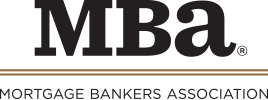
Ncontracts Cassandra Wayman: 10 Tips for Building a Robust Lending Compliance Program

Cassandra Wayman, Lending Compliance Analyst with Ncontracts, launched her career as a HMDA data auditor, which evolved into a pivotal role where she built and led a fair lending program for a leading mortgage company over a span of more than 10 years. Her role allowed her to engage deeply with all areas of the business, providing her with extensive insight and expertise into various facets of mortgage lending.
Wayman’s career encompasses a broad spectrum of roles in the credit and home-buying industry, including positions as a loan officer, real estate agent, and she even began working as an appraiser-in-training before realizing that her true love was in fact Fair Lending – so she followed her heart back into the fair lending world and join the Ncontracts Lending Compliance team.
As lenders navigate the complexities of compliance in 2025, adopting effective strategies to meet regulatory requirements and promote fair lending is vital. While we can’t predict future rules or disruptions, we can prepare to meet ever-evolving risks.
As you revisit your lending compliance program, implement these best practices to strengthen your compliance management program.
1. Leverage data effectively
Lenders collect a lot of data — and how it’s used matters. Poor data management can lead to regulatory penalties long after data collection. In other words, your actions now may be reexamined later under different leadership with different regulatory priorities.
When analyzing data through a fair lending lens, look for patterns in lending practices, the impact of discretionary decisions, and any pricing or fees exceptions that may warrant closer review.
2. Regularly review risk assessments
Dynamic risk management — a proactive approach to identifying, assessing, and mitigating risk in real time — is crucial. Your fair lending risk assessments should pinpoint inherent risks, evaluate existing controls, and gauge residual risks.
As your institution gains insights into evolving regulations (e.g., 1071, HMDA compliance), update risk assessments to address gaps and high-risk areas.
3. Enhance staff straining
Your employees, such as loan officers, underwriters, appraisers, and marketing specialists, need to know the most updated fair lending best practices. Research from the 2024 Interagency Fair Lending Webinar revealed that loan officers often submit incomplete demographic information, highlighting the need for clear and straightforward training on data collection processes.
Employee education programs lay the groundwork for your team members’ knowledge of fair lending. Offer customized training on fair lending laws, data collection guidelines, and bias prevention. Using real-world examples and case studies can help emphasize how to apply these practices in real situations.
4. Implement robust controls
Lenders need controls that help minimize risk and reduce the chances of facing fair lending-related issues.
Review your current controls regularly for effectiveness and consider adding new ones to improve data accuracy. Preventative controls include fair lending risk assessments, vendor oversight and monitoring, loan underwriting guidelines, and data collection and analysis practices.
5. Foster cross-department collaboration
A robust lending compliance management program is not solely the responsibility of the compliance team; it requires collaboration among team members from many departments.
Board members and senior leadership must understand the relevant regulatory priorities and their role in promoting a compliance culture. Although specific regulations may be on hold, board support will be vital for future implementation and change management processes.
6. Engage with the community
The Federal Reserve and other regulators have emphasized intentionality in lenders’ marketing and outreach efforts. Effective community engagement is essential for meeting fair lending obligations, yet it is often overlooked. Common examples of oversight include insufficient targeted mortgage marketing in Assessment Areas (AAs) or credit market areas and non-diverse advertising models.
As you focus on fair lending compliance, use your analysis and review processes to improve community outreach and marketing strategies and ensure they effectively reach the appropriate audiences.
7. Don’t forget about your peers
Regulators will compare your performance, protocols, and processes to lenders with similar resources and services, underscoring the importance of knowing what similarly regulated financial institutions are doing well and where they are struggling.
For instance, if a peer institution receives a consent order for redlining risk, you can leverage this information to gain insights into compliance expectations. Additionally, you can learn from the difficulties faced by your peers to develop a proactive strategy for identifying and addressing potential compliance issues before they become a bigger problem.
8. Consider artificial intelligence (AI) risk
AI is a hot topic under the new administration, but like any emerging technology, it brings new risks.
Review your internal AI systems to ensure they promote transparency and accountability and address bias and fairness, two issues often associated with generative AI (genAI) usage. Additionally, assess your vendors’ systems for common third-party AI-related risks, such as data security and black box issues.
9. Measure results
The saying goes, “You can’t manage what you can’t measure.” Some common key risk indicators (KRIs) to monitor include the completion rate of compliance training, the number of consumer complaints, and the frequency of policy exceptions.
Key performance indicators (KPIs) also help determine whether a lender meets its risk management goals. It’s vital to link team and individual objectives to compliance-related outcomes, such as the distribution of loans in underserved areas or enhancements in data collection accuracy. By establishing clear KPIs tied to compliance objectives, you can ensure accountability at all levels of your organization.
10. Maximize your efforts with technology
Keeping up with the latest compliance updates in a rapidly changing regulatory environment can be challenging for teams of all sizes and resources. The right compliance management solution can enhance your compliance team and organization by streamlining key tasks. This includes improving your team’s awareness of evolving fair lending regulations and effectively handling data reporting and contract management.
Forging Ahead
Regardless of the current regulatory environment, fair lending compliance is crucial to your organization.
Remember, the choices your institution makes to enhance — or overlook — lending compliance today may be scrutinized at some point. Are you ready to take action and ensure your lending compliance program is prepared for the future?
(Views expressed in this article do not necessarily reflect policies of the Mortgage Bankers Association, nor do they connote an MBA endorsement of a specific company, product or service. MBA NewsLink welcomes submissions from member firms. Inquiries can be sent to Editor Michael Tucker or Editorial Manager Anneliese Mahoney.)
